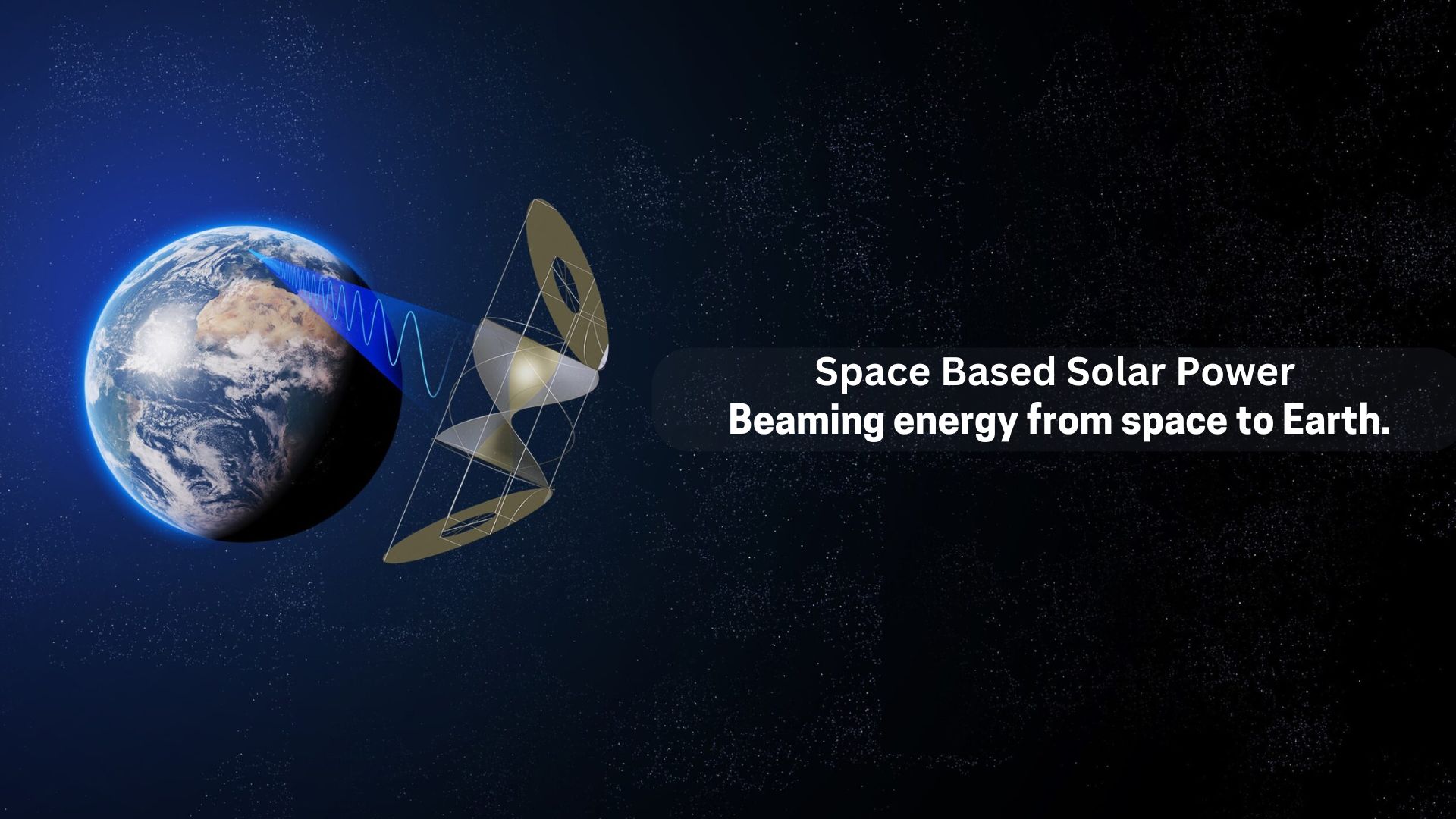Solar power has long been one of the most promising renewable energy sources, but what if we could collect solar energy in space and transmit it to Earth? This futuristic concept, Space-Based Solar Power (SBSP), could provide limitless, clean energy without the limitations of ground-based solar panels.
With advancements in wireless power transmission, satellite technology, and space infrastructure, could SBSP become a reality shortly?
What is Space-Based Solar Power?
SBSP involves placing solar panels in orbit to collect sunlight and wirelessly transmitting the energy to Earth using microwaves or lasers.
How It Works:
- Giant Solar Satellites – Large solar arrays in space continuously capture the sun’s energy.
- Wireless Power Transmission – The energy is converted into microwave or laser beams and sent to Earth.
- Ground Receiving Stations – Special antennas on Earth (rectennas) receive the energy and convert it into electricity.
Why Space Solar Power is a Game Changer
SBSP offers several advantages over traditional solar energy:
1. Unlimited, 24/7 Solar Energy
- No clouds, no night-time limitations – continuous energy collection from the sun.
- 8x more energy capture compared to Earth-based solar panels.
2. Reduces Dependence on Fossil Fuels
- Provides clean, renewable energy without land use issues.
- It could power entire cities without requiring extensive infrastructure.
3. Solving Energy Crises in Remote Areas
- SBSP can beam power directly to disaster zones, rural areas, or military bases.
- There is no need for traditional power plants or grids.
Challenges & Roadblocks to SBSP
Despite its potential, SBSP faces significant hurdles:
1. High Cost of Launch & Deployment
- Building and launching massive solar arrays into space requires billions of investment.
- However, falling rocket launch costs (thanks to companies like SpaceX, Blue Origin, and NASA) make space projects more affordable.
2. Energy Transmission Efficiency
- Microwave and laser power transmission must be highly efficient and safe to avoid energy loss.
- Requires advanced rectenna technology to receive and convert energy.
3. Space Debris & Satellite Maintenance
- Large space-based solar stations could become targets for space debris.
- Long-term maintenance in space is costly and complex.
Who is Developing Space-Based Solar Power?
Several organizations and companies are already investing in SBSP research:
- NASA – Studying wireless power transmission for decades.
- China – Plans to test a space solar power station by 2028.
- European Space Agency (ESA) – Launched the SOLARIS program to explore SBSP feasibility.
- Caltech & Northrop Grumman – Successfully demonstrated space-to-Earth wireless energy transfer in 2023.
Future of Space-Based Solar Power
- The first orbital prototypes are expected to be in the next decade.
- Commercial SBSP stations could be operational by 2040–2050.
- Potential integration with space colonies (e.g., powering the Moon or Mars bases).
Final Thoughts
While still in the early stages, Space-Based Solar Power has the potential to revolutionize energy production. With continued advancements in space infrastructure, AI-driven satellite management, and wireless power transmission, SBSP could become a key player in the global clean energy transition.
Would you like this expanded into a more detailed blog post?

